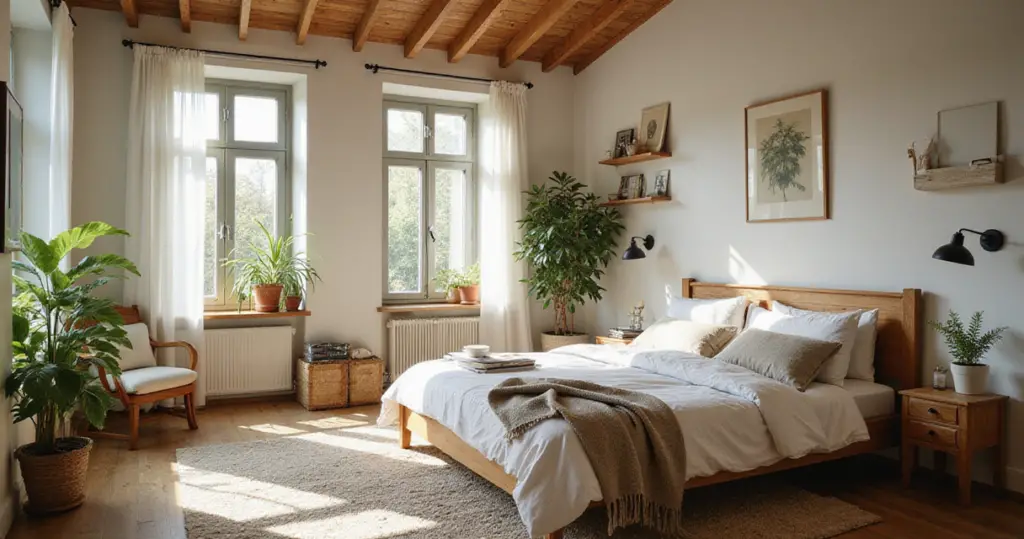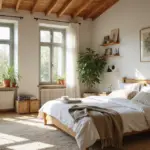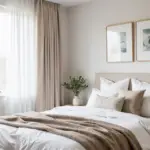You know what people always ask me? “Remi, how do I make my bedroom feel like a real sanctuary? Not just a room I crash in, but a place that actually recharges me?” Everyone’s drowning in picture-perfect, sterile-looking rooms on social media that feel completely unattainable and, honestly, a little cold. They look like hotel rooms, not homes.
Here’s the thing: a bedroom isn’t a showroom. It’s a living, breathing ecosystem with you at the center of it. It should support you, calm you, and literally help you grow. It’s about creating a space that works with your body’s natural rhythms, not against them. Most decor advice is just noise—it’s about trends and buying more stuff. But what really matters is creating a habitat that nurtures you. I’ve learned that the hard way, by bringing a sickly plant into a soulless room and realizing they were both suffering from the same lack of light and life.
Let’s cut through the corporate-speak and talk about what actually works. This is about making your bedroom a place that truly feels alive.
Foundation & Vision: Designing Your Ideal Sleep Sanctuary
Before you buy a single thing, you need to map out your ecosystem. This is the part everyone wants to skip, but it’s the most important. It’s about understanding what you really need your space to do for you—beyond just holding a bed. Think of it as preparing the soil before you plant the garden.
1. Uncover Your Style (Hint: It’s Not a ‘-Core’)
Everyone’s obsessed with labels—minimalist, industrial, cottagecore. That’s just noise. It’s corporate speak for a pre-packaged box of stuff. What actually matters is how you want to feel. The real trick is to pick five adjectives that describe your ideal state of being in that room. Is it “calm, earthy, creative, safe, and restorative”? Or “bright, energetic, simple, airy, and clean”? Every decision you make, from a pillowcase to a lamp, has to answer to those five words.
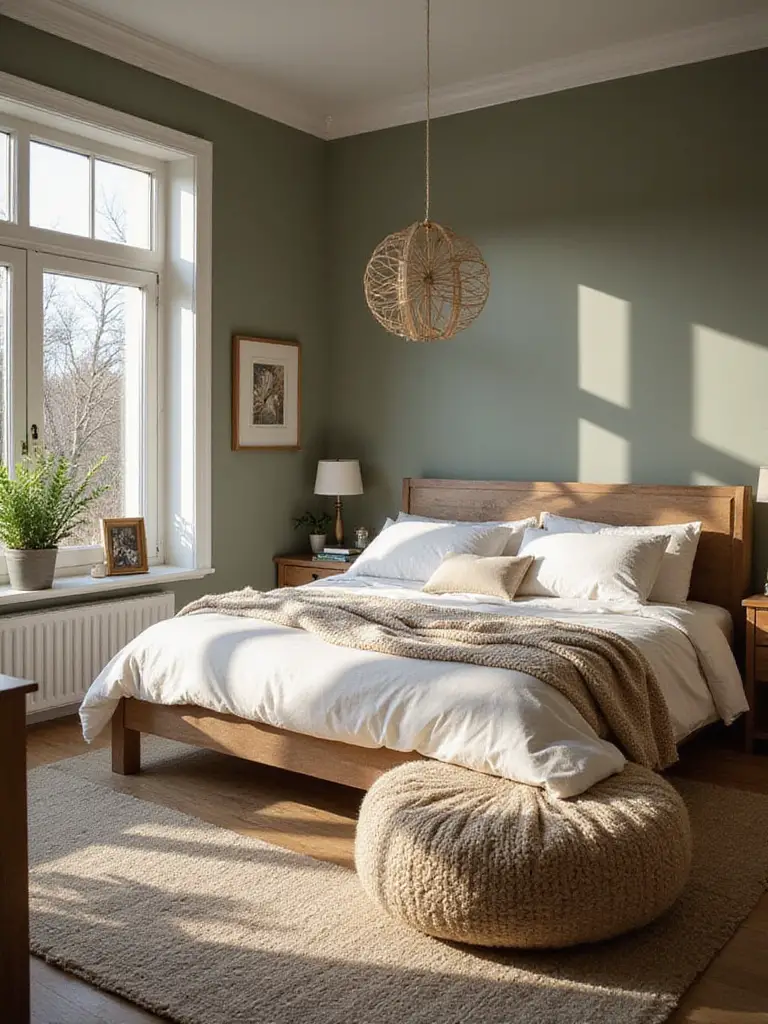
I had a client who was completely paralyzed by this. They had a thousand pins on Pinterest and no idea where to start. I told them to forget the images and just write down the five words. They wrote: “grounded, soft, natural, quiet, lush.” Suddenly, everything clicked. They knew they needed wood tones, linen fabrics, lots of plants, and colors that felt like a forest floor. It’s not about finding a style; it’s about writing your room’s constitution.
From that core feeling, the most powerful tool you have is color.
2. Choose Calming Colors from Nature’s Palette
Forget trendy color-of-the-year nonsense. Your body is hardwired to respond to the colors of nature. Think about it: the soft blues and grays of a pre-dawn sky, the deep greens of a forest, the warm terracottas of rich soil. These are the colors that tell our ancient lizard brains to relax. They lower our heart rate and signal that it’s time for rest. This isn’t just fluffy design talk; it’s biology.
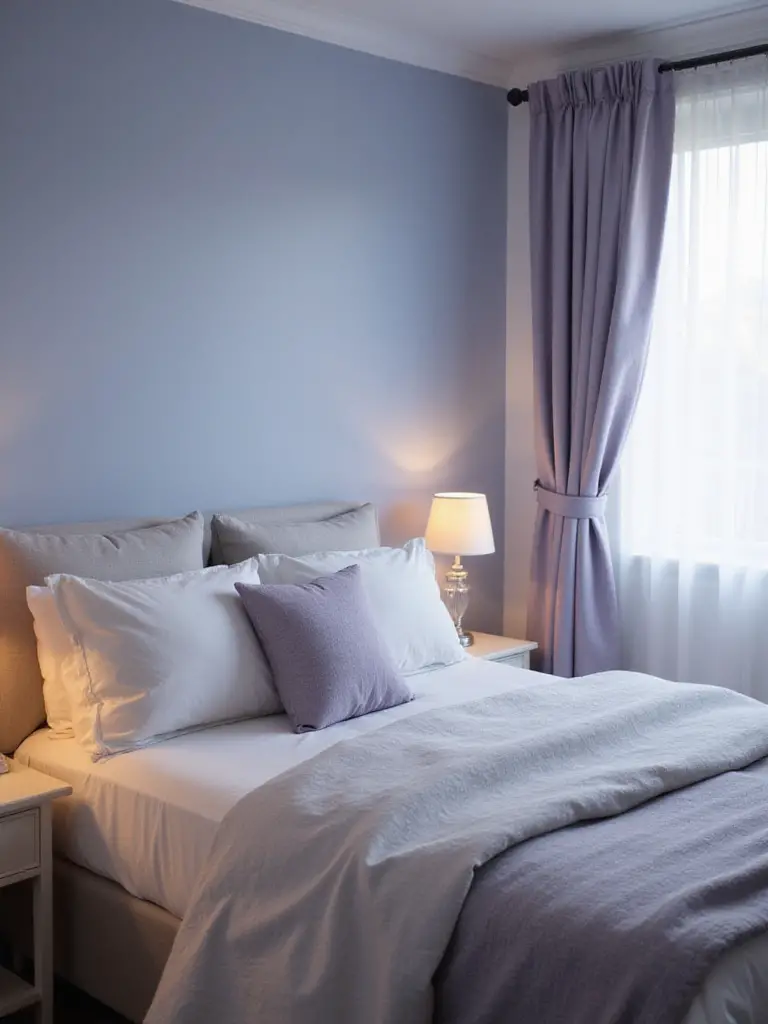
The best shortcut I know is the ‘Monochromatic Depth’ strategy. Instead of stressing about coordinating a bunch of different colors, just pick one grounding, natural hue—like sage green. Then, layer it. Paint the walls a light, misty sage. Find bedding in a medium, earthy sage. And get an accent pillow or a ceramic pot in a deep, dark forest green. It creates incredible depth and richness without being chaotic or loud. Your nervous system will thank you.
Once you’ve got your colors, you need to think about how you’ll move through the space.
3. Map Out Functional Zones like Micro-Habitats
Even a small bedroom has to do more than one job. It’s where you sleep, get dressed, unwind, maybe read. If you treat it like one big box, those energies get jumbled up. The stress of your ‘getting ready for work’ zone can easily bleed into your ‘trying to fall asleep’ zone. The key is to create mini-habitats for each activity. The sleeping area should be sacred—dark, calm, and uncluttered. A corner with a comfy chair and a good lamp becomes your reading habitat. The space by your closet is your dressing habitat.
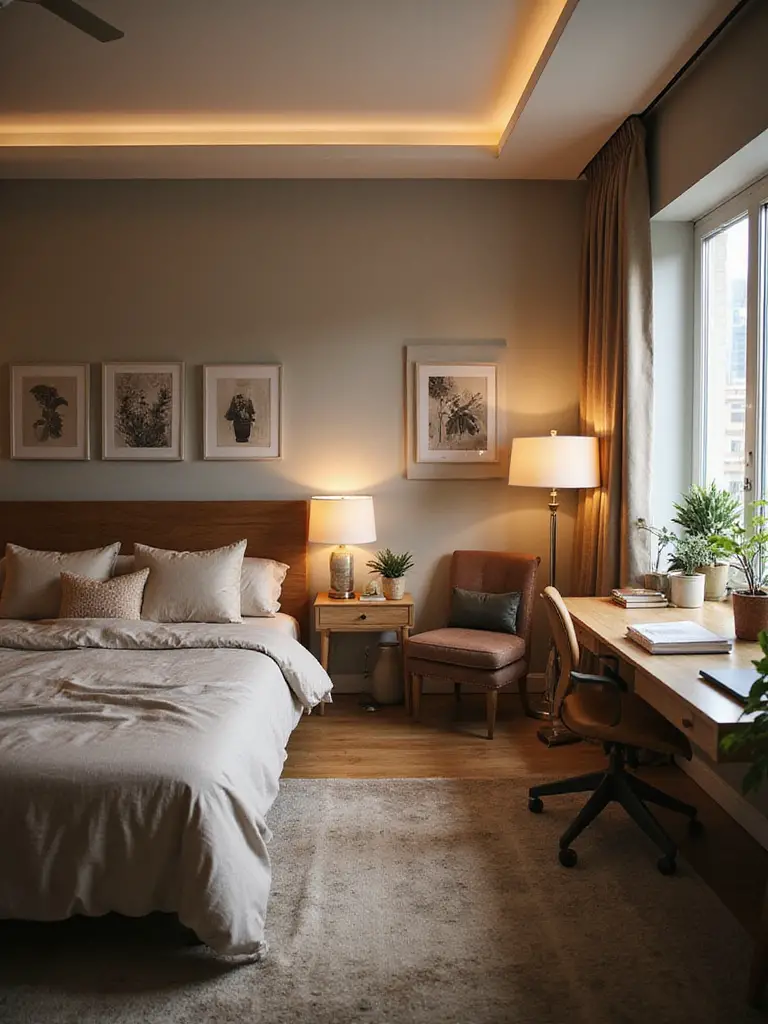
You don’t need walls to do this. An area rug can define your sleeping zone. A specific type of lighting—like a warm, focused lamp—can create a reading nook instantly. I learned this the hard way in my first tiny apartment, where my desk was two feet from my bed. I couldn’t sleep because my brain was always in ‘work mode.’ The simple act of putting up a lightweight screen to physically hide my desk at night was a complete game-changer. It told my brain that the work habitat was ‘closed’ for the day.
Of course, none of this works if your furniture doesn’t fit.
4. Accurately Measure Your Bedroom (No, Really)
This sounds so basic, but can we just talk about how many people get this wrong? They fall in love with a giant, beautiful bed frame online, order it, and then can’t open their closet door. I’ve seen it happen, and it’s a costly, soul-crushing mistake. You must measure everything: the walls, the doors, the windows, the height of the ceiling. And then you need to measure the furniture you’re considering—including the diagonal depth to make sure it can actually get through your doorframe.
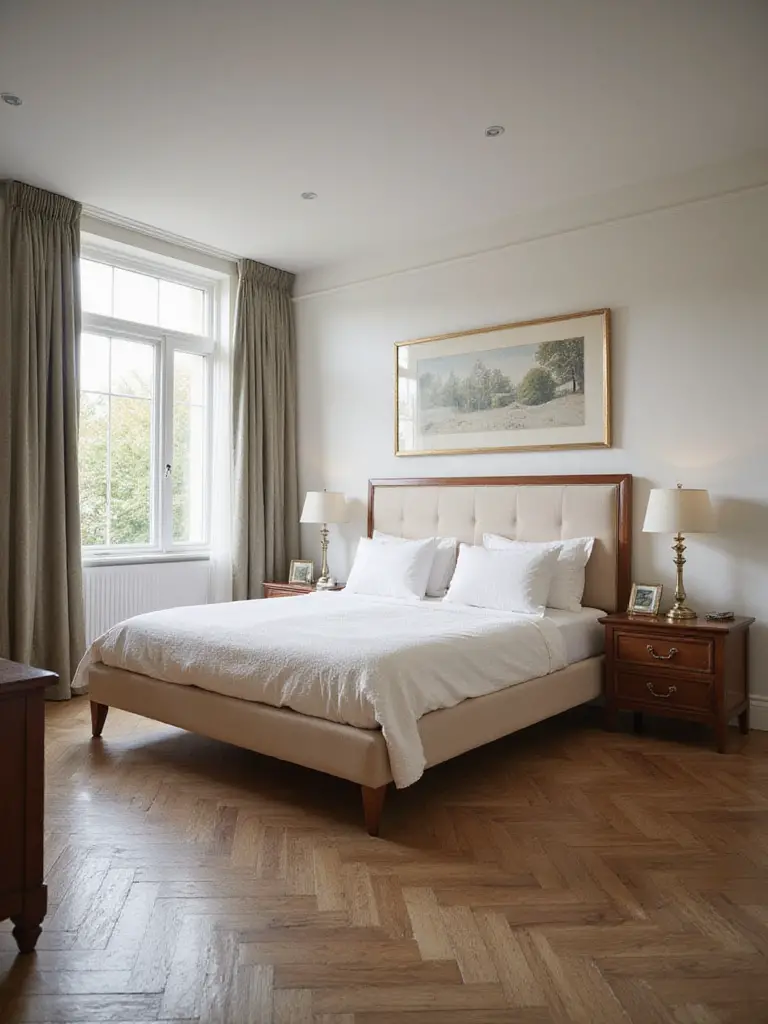
My secret weapon here is painter’s tape. Once you have the dimensions of a piece of furniture you’re considering, tape its outline onto the floor. Live with it for a day. Try to walk around it. Try to make your bed. Open your drawers. You will know instantly if it works or if it’s going to be a daily source of frustration. This little trick has saved my clients thousands of dollars and endless regret.
Having a precise map of your space naturally leads to a better financial plan.
5. Strategically Budget for What You Touch
Your budget is not about finding the cheapest version of everything. It’s about investing in the elements that have the biggest impact on your well-being. And in a bedroom, that means prioritizing the things your body touches every single day. Splurge on a high-quality mattress made from natural materials and on good, breathable bedding. These aren’t just objects; they are tools for your health. A cheap mattress and polyester sheets are not only bad for your sleep, but they often off-gas chemicals you really don’t want to be breathing all night.
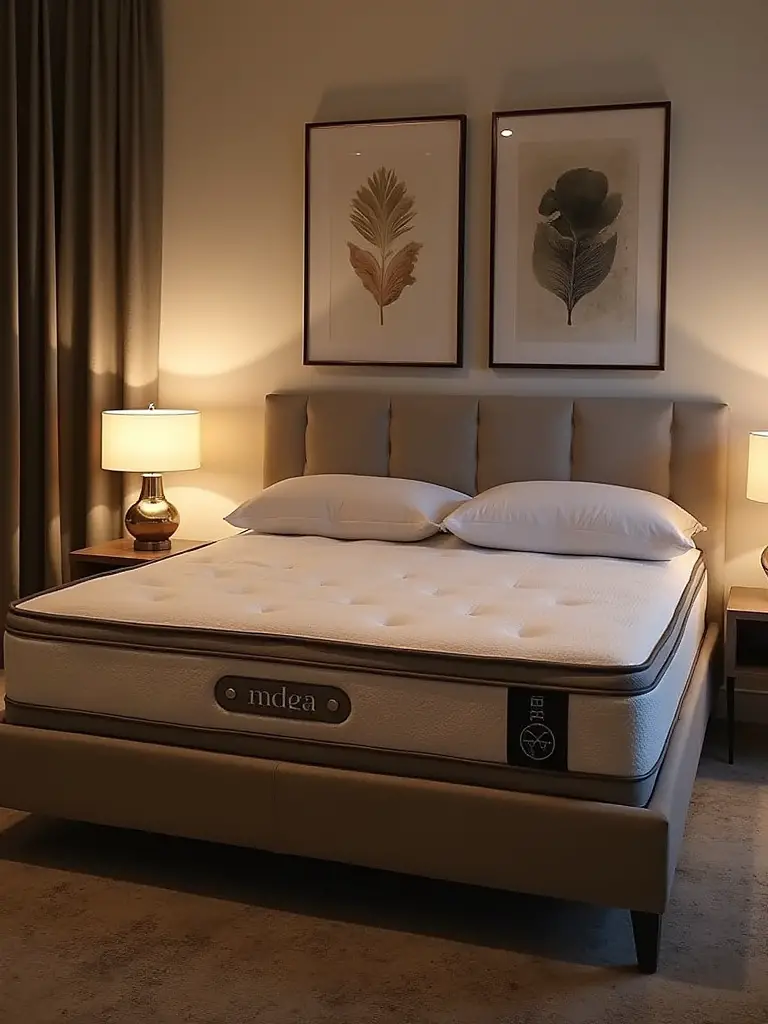
For everything else, you can get creative. Scour thrift stores for solid wood dressers and nightstands—they’re better made than most new stuff and you can paint them to match your vision. A client of mine with a tight budget put 60% of their money into a fantastic organic latex mattress and linen sheets. Then we found a set of beat-up old nightstands for $40, sanded them down, and gave them a beautiful coat of deep green paint. The room looks and feels a million bucks, because the foundation of comfort is solid.
Essential Furnishings & Layout Mastery
Okay, with your vision and plan set, it’s time to bring in the big pieces. This is about choosing the bones of your ecosystem. These pieces define the function and flow of the room, so choosing them with intention is everything.
6. Select the Ideal Bed Frame for Health and Style
Your bed frame isn’t just a platform for your mattress; it’s the throne of your sanctuary. A flimsy, squeaky frame made of particleboard isn’t just annoying, it can be releasing formaldehyde into your air while you sleep. The BS is that all bed frames are the same. They’re not. A solid wood or metal frame is an investment in stability, longevity, and better indoor air quality. It’s the literal foundation of your rest.
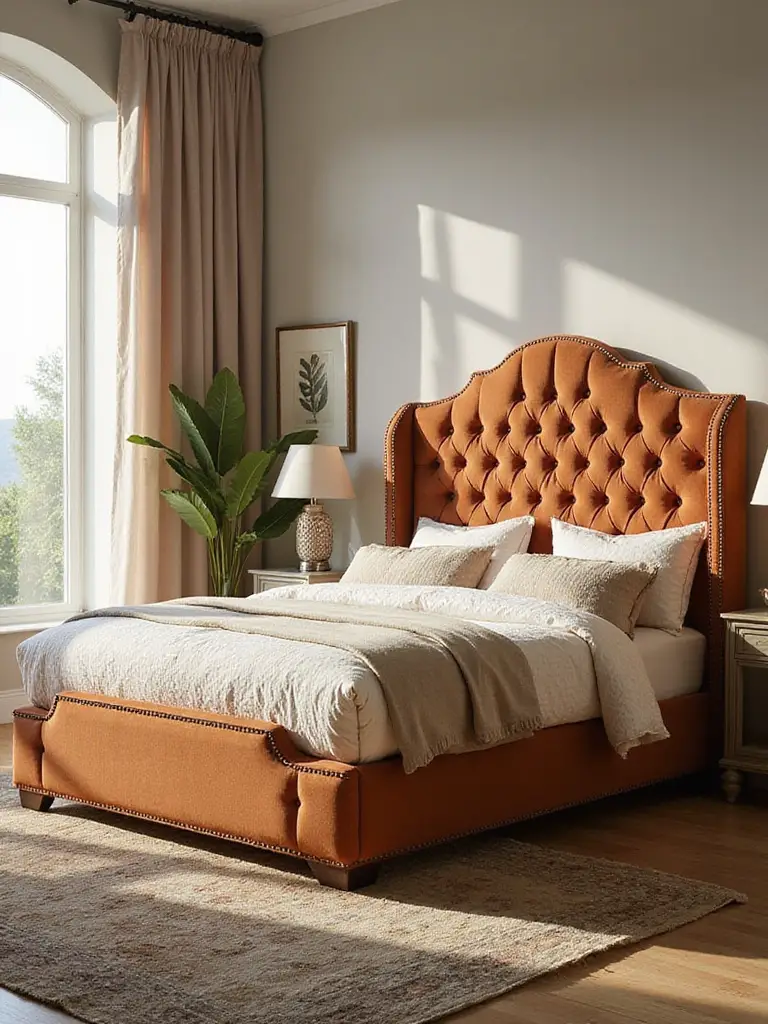
Look for frames made from solid, sustainably sourced wood or recycled metal. And think about function beyond just holding the mattress. Platform beds with built-in drawers are a godsend in small urban apartments, letting you eliminate a bulky dresser entirely. I helped a friend in a studio swap her clunky bed-and-dresser combo for a single platform storage bed. The amount of open floor space it created made her tiny room feel twice as big and infinitely more peaceful.
Once you have your bed, placing it correctly is the next critical move.
7. Optimize Furniture Placement for Energy Flow
Designers talk about ‘traffic flow,’ but I like to think of it as ‘energy flow.’ How does the chi of the room move? A poorly placed piece of furniture can create a dam, making the whole room feel stagnant and cramped. You should be able to walk around your bed without sucking in your stomach or turning sideways. The golden rule is about 24-30 inches for your main pathways.
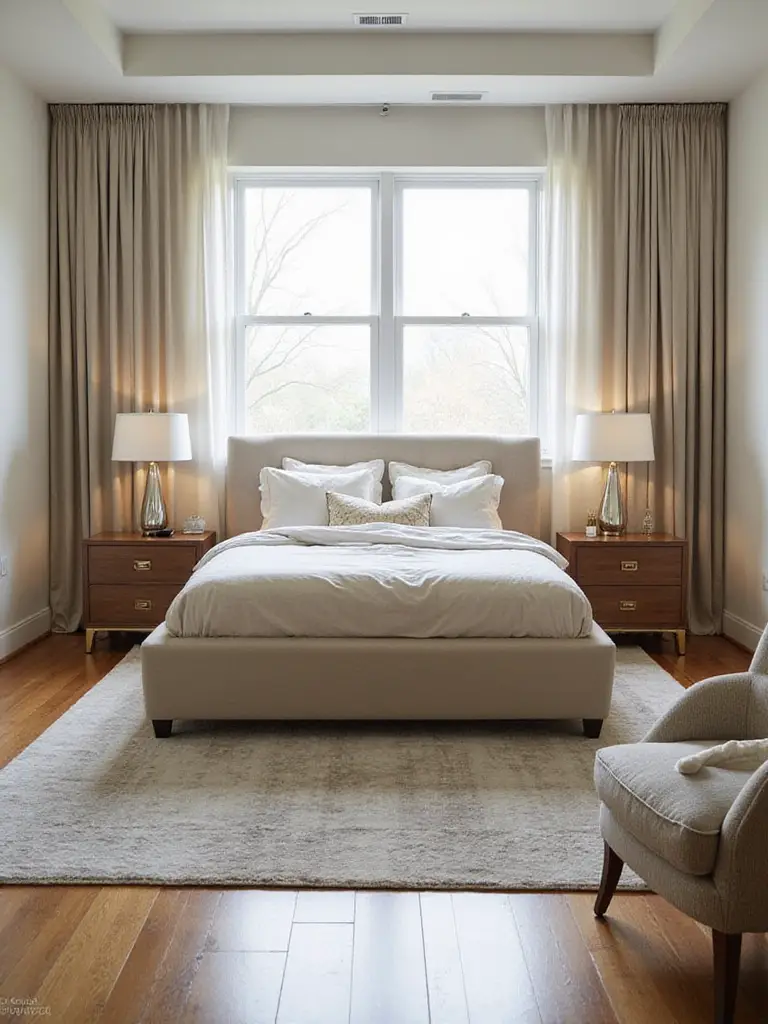
The most common mistake I see is people shoving the bed into a corner to “save space.” In reality, this often makes a room feel smaller and more awkward, especially if two people use the bed. Centering the bed on the main wall, even if it seems counterintuitive, creates a sense of balance and calm. It establishes the bed as the clear focal point and creates symmetrical pathways, which is incredibly soothing to the human brain. Your room will instantly feel more organized and serene.
Right next to the bed, your nightstands are your trusty sidekicks.
8. Pick Nightstands That Actually Work For You
The idea that you need two perfectly matching, traditional nightstands is a myth sold by furniture companies. Your nightstand should be your loyal servant. What do you need it to do? Hold a glass of water, a book, your phone, and a small plant? Then a simple floating shelf or a small stool might be perfect. Need to hide a mountain of things like sleep masks, journals, and hand cream? Then you need something with a drawer. Function comes first, always.
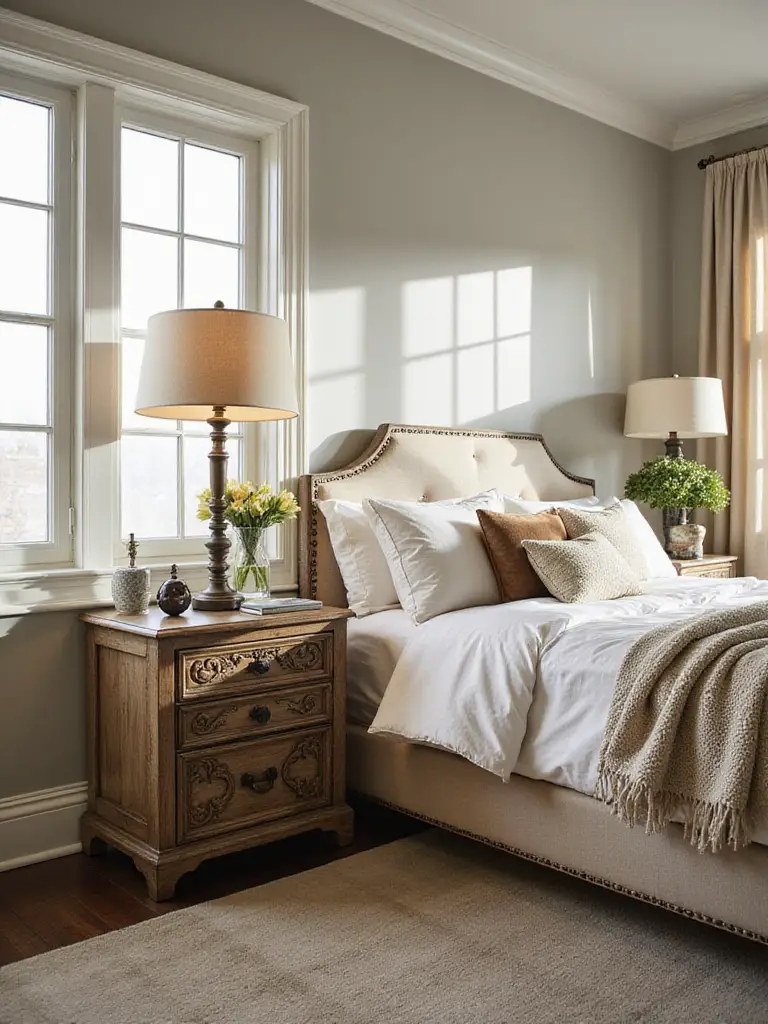
I personally love using unconventional items as nightstands. I once used a stack of vintage, hardcover books for a client who was a writer. In my own home, one of my nightstands is a sturdy, reclaimed wooden crate stood on its end. It has character, it was practically free, and it has the perfect little nook for my book. Don’t be afraid to think outside the box—it makes your space more personal and interesting.
With the basics in place, you can carve out a special spot just for you.
9. Add a Cozy Reading Nook for a Mental Escape
In our hyper-connected world, we all need a place to disconnect. Creating a dedicated reading nook is like building a nest for your mind. It’s a space with one job: to help you be quiet and turn inward. All it really takes is a comfortable chair, good light, and a small table for a cup of tea. It doesn’t have to be big—a quiet corner, the space under a window, or even a wide hallway can work.
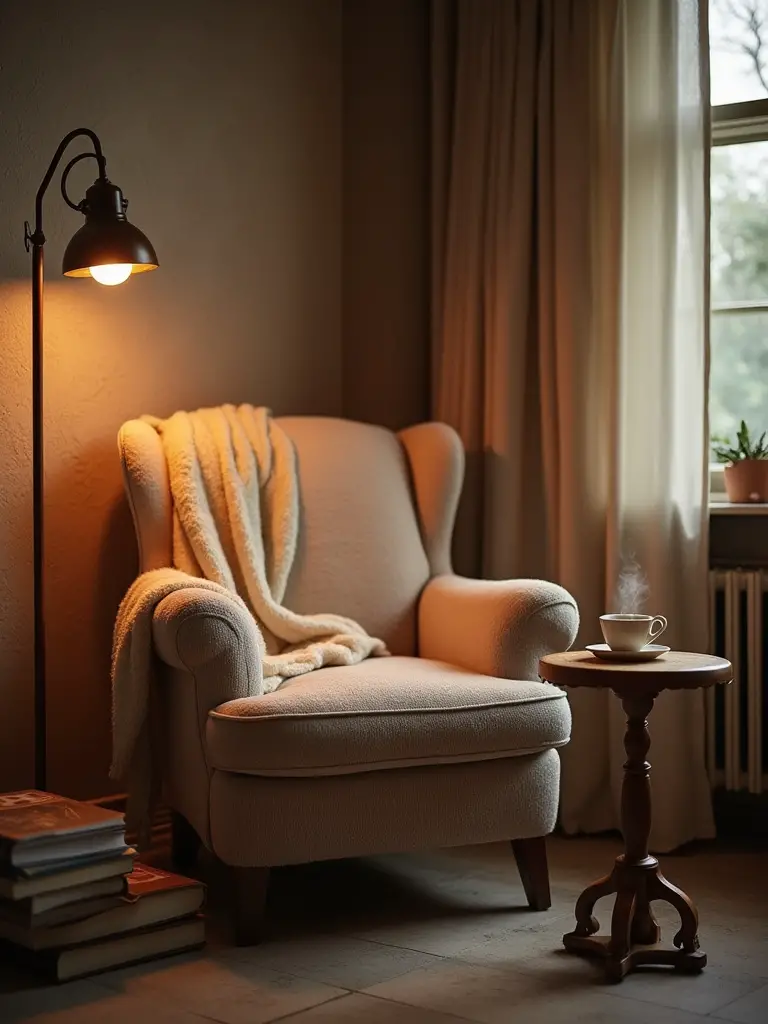
The key is making it a phone-free zone. This is a sacred space. I have one client who put a beautiful, oversized armchair and a soft sheepskin rug in a corner of her bedroom. She calls it her ‘thirty-minute-a-day-chair.’ Every evening before bed, she sits there and reads a real, paper book. She says it has completely transformed her ability to fall asleep, because it signals to her body and mind that the day is over and it’s time to power down.
Soft Layers & Textural Richness
Now for the best part. This is where we take the solid foundation and make it feel incredibly lush and inviting. Texture is the secret language of comfort. It’s what makes you want to curl up and stay. It’s the moss and soft leaves of your bedroom ecosystem.
10. Layer Bedding and Textiles Like You’re Building a Nest
A single comforter on a bed is functional. A layered bed is a luxurious invitation. Think of it like dressing for changing weather. You start with a base layer of breathable sheets (natural fibers only—we’ll get to that). Then you add a mid-weight quilt or coverlet. On top of that goes a fluffy duvet, often folded at the foot of the bed. Finally, you drape a chunky knit or faux fur throw over a corner. This isn’t just for looks; it allows you to regulate your temperature perfectly throughout the night.
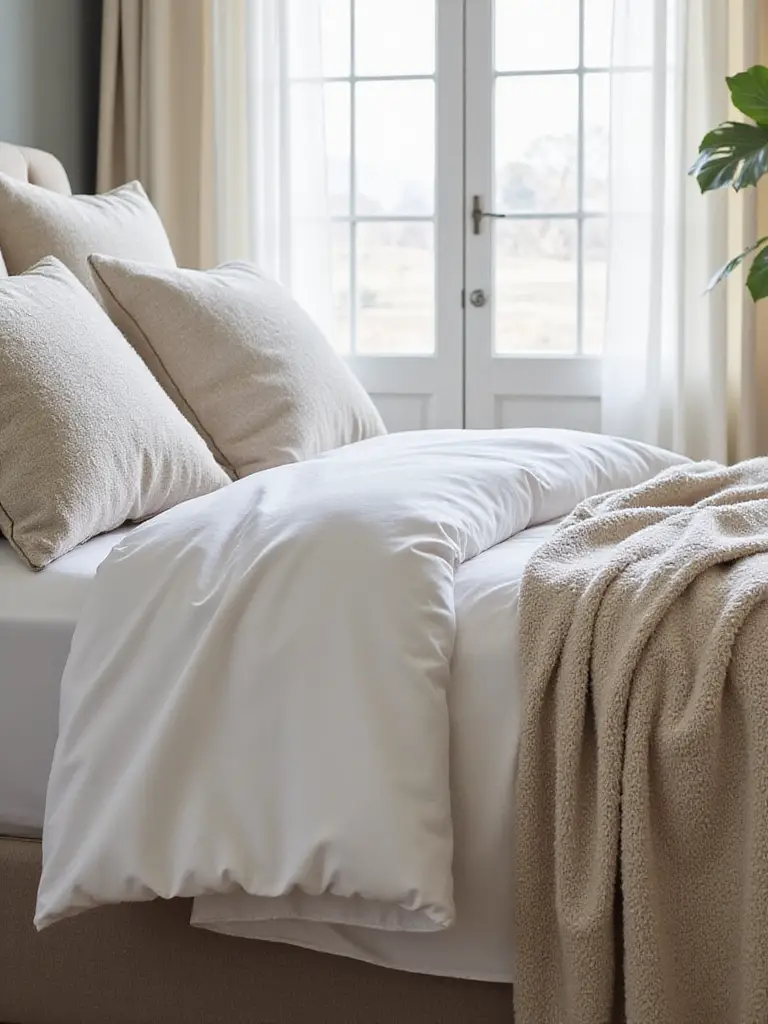
And please, let’s talk about fabric. Forget those sky-high thread counts; that’s mostly a marketing gimmick. What you want are natural, breathable fibers like linen, organic cotton, or even bamboo. They wick moisture away from your body and feel amazing against your skin. Synthetics like polyester trap heat and don’t breathe, which is a recipe for a bad night’s sleep. Investing in one set of good linen sheets that gets softer with every wash is a thousand times better than having five sets of cheap poly-blend sheets.
From the bed, we move down to the floor.
11. Introduce an Area Rug to Ground Your Space
A bare floor in a bedroom, especially wood or tile, can feel cold and adrift. An area rug is like dropping an anchor. It instantly grounds the sleeping area, defines the space, and adds a massive dose of warmth and coziness. It also does wonders for acoustics, absorbing sound and making the whole room feel quieter and more intimate. Waking up and stepping onto a soft, plush surface instead of a cold, hard floor is a small daily luxury that has a huge impact on your morning mood.
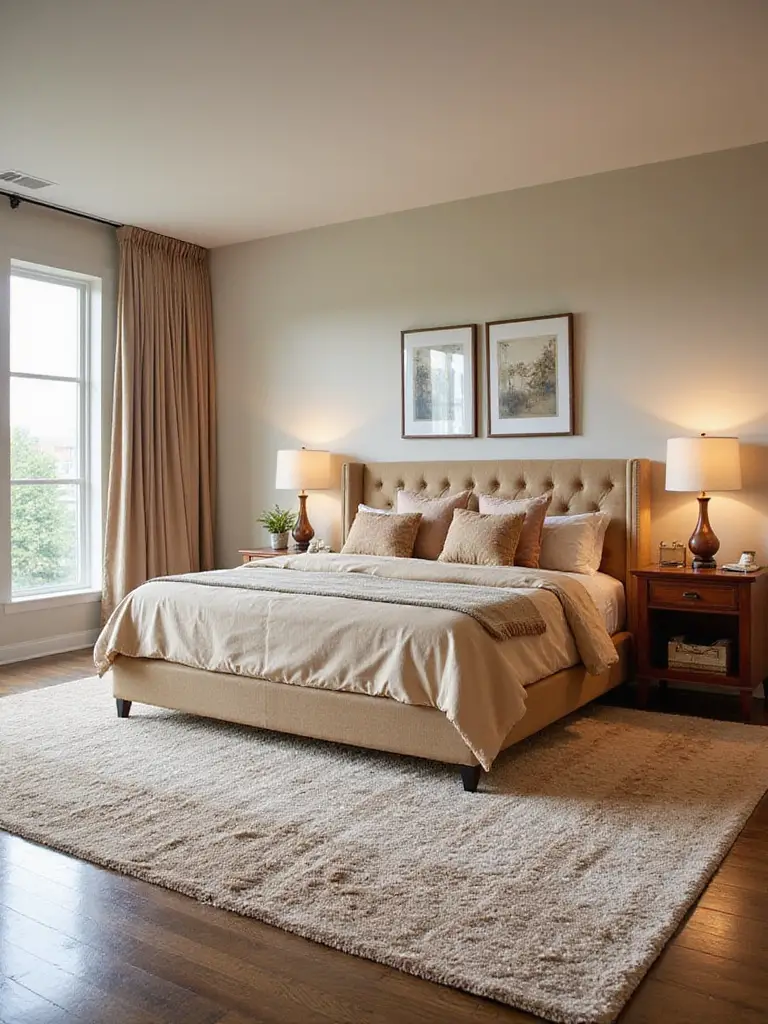
When it comes to size, go bigger than you think. The biggest mistake people make is getting a tiny rug that just floats in the middle of the room. You want the rug to extend at least 18-24 inches beyond the sides of your bed. Ideally, both your bed and your nightstands should sit comfortably on it. And just like with bedding, think natural fibers. Wool is incredibly durable, soft, and naturally flame-resistant. Jute or sisal can bring in a wonderful earthy, organic texture.
Now let’s look up at the windows.
12. Choose Window Treatments for Privacy and Ambiance
Your window treatments are your room’s eyelids. They have a massive job to do: provide privacy, control light, and even insulate the room. Getting this right is crucial for good sleep. The best solution, hands down, is a layered approach. It gives you the ultimate flexibility for managing your personal ecosystem.
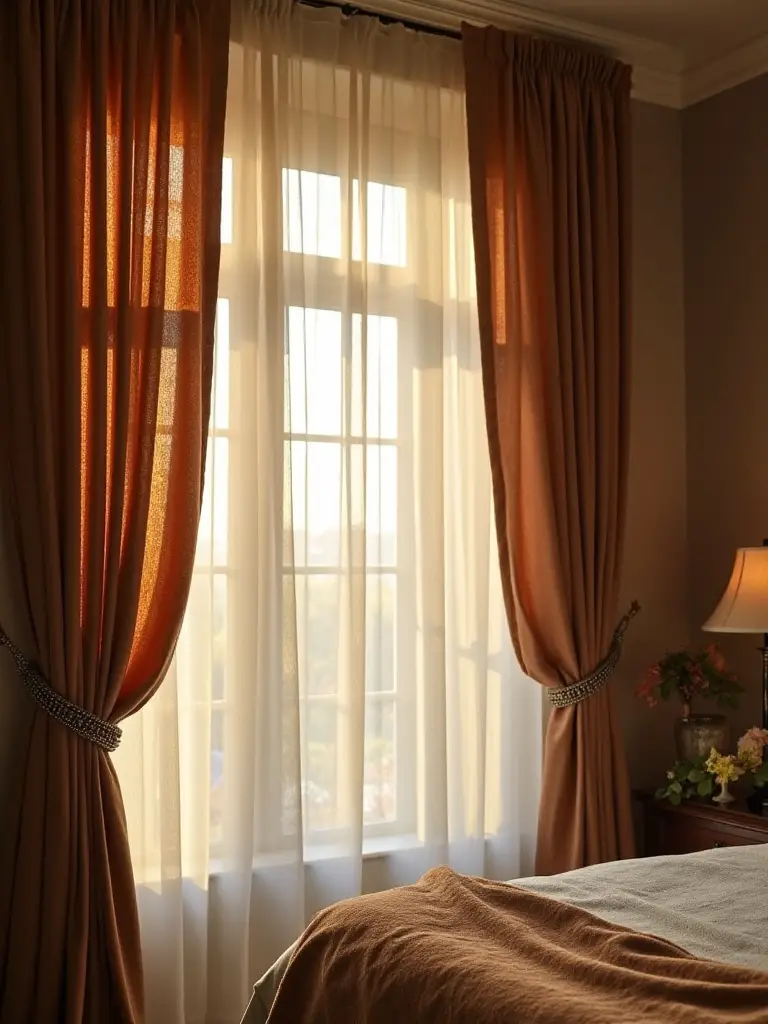
Start with a translucent or sheer layer right against the window. This could be a simple roller shade or sheer linen curtains. This layer gives you privacy during the day while still letting in that beautiful, diffused natural light that both you and your plants need to thrive. Then, on an outer rod, hang a set of blackout curtains. They are non-negotiable for deep, restorative sleep, blocking out streetlights and early morning sun that can disrupt your circadian rhythm. It’s the best of both worlds: light when you want it, and pitch-black darkness when you need it.
Once your windows are dressed, it’s time for the final, fun layers.
13. Accent with Throw Pillows for Personality and Comfort
Throw pillows are the easiest, most affordable way to inject your personality and play with texture. But the decorator- showroom look of a million karate-chopped pillows is just silly. Who wants to spend ten minutes taking them all off the bed every night? The key is to be intentional. Think in odd numbers—three or five is usually a good bet for a queen or king bed.
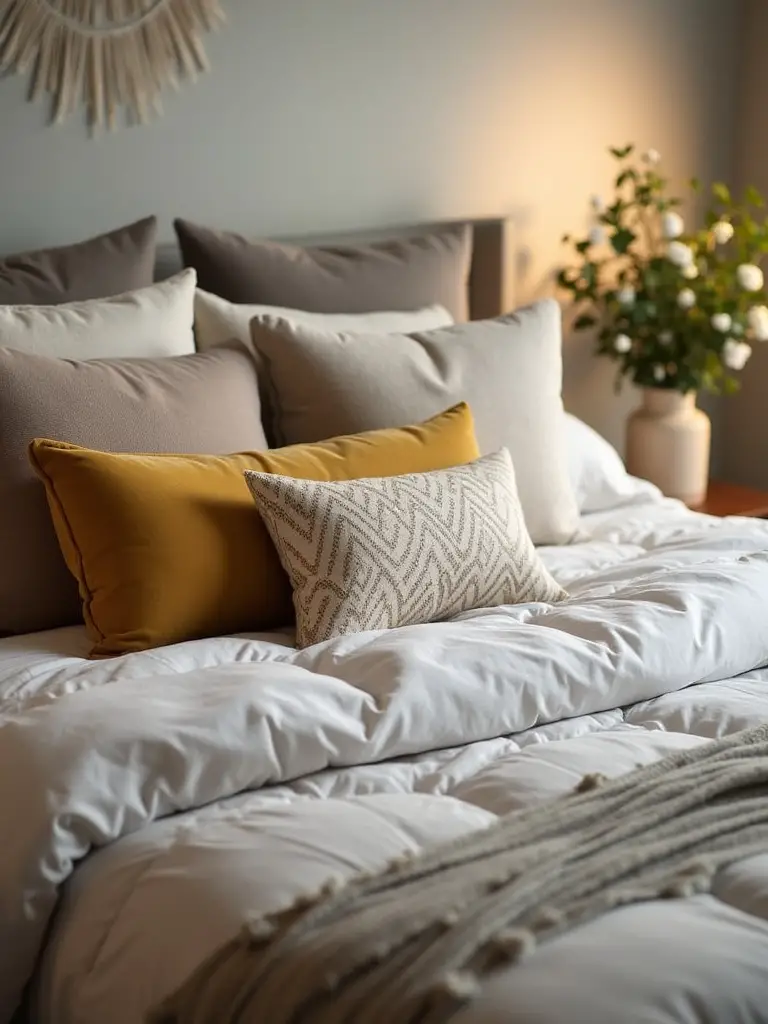
The secret is to mix three things: size, shape, and texture. Try one large square, one smaller square, and one rectangular lumbar pillow. Combine a smooth velvet with a nubbly wool and a crisp linen. This is how you create real visual interest without it looking like a pillow showroom exploded. They’re the finishing touch that ties all your colors and textures together, making the space feel complete.
Illuminating Ambiance: The Power of Light
Light is the most powerful and underrated design tool you have. It dictates the mood, energy, and function of your bedroom more than almost anything else. You have to learn to sculpt with it, creating different scenes for different moments. This is about working with your body’s natural clock, not fighting it.
14. Combine Varied Lighting to Control the Mood
Relying on a single, harsh overhead light is a crime against ambiance. It’s the lighting equivalent of shouting all the time. A good lighting plan is a conversation, with different sources chiming in when needed. You need at least three layers of light in your bedroom:
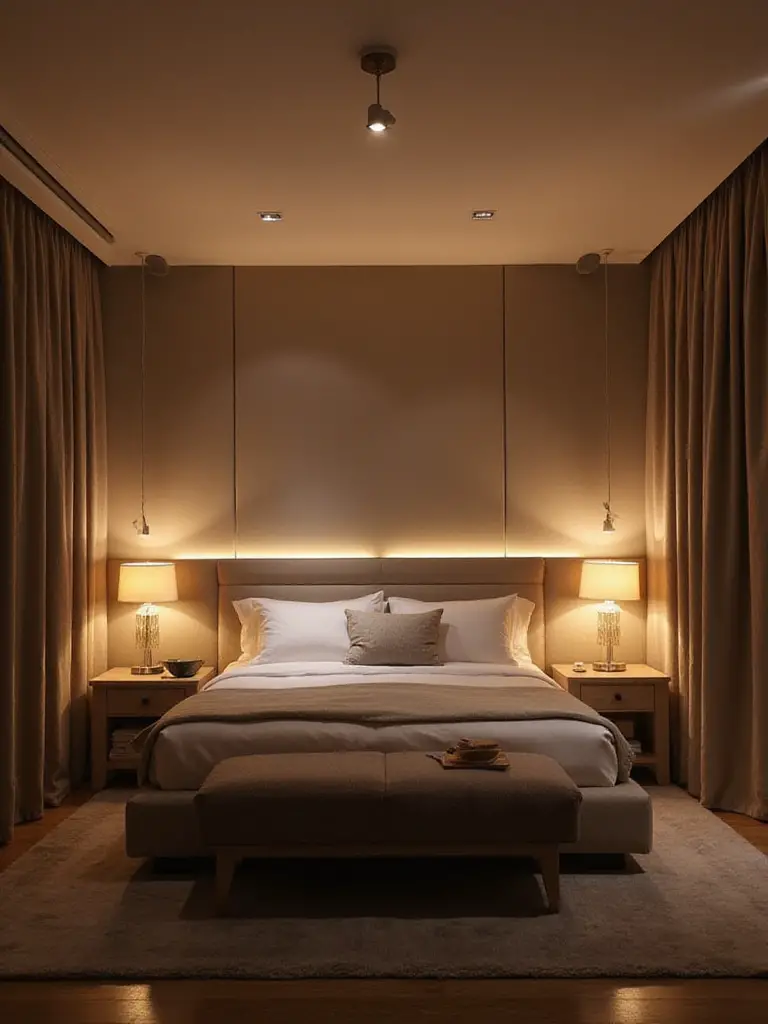
- Ambient: This is your general, overhead light. But it should be on a dimmer!
- Task: This is focused light for specific activities, like a bedside lamp for reading or a light over a vanity.
- Accent: This is the magic layer. It’s soft, indirect light that creates a mood, like a small lamp on a dresser, or some LED strips behind a headboard for a warm glow.
By having these different sources, you can orchestrate the room’s energy. Bright and functional in the morning when you’re getting ready, soft and focused in the evening for reading, and a gentle, warm glow as you wind down for sleep. It’s like having a remote control for your mood.
And that task lighting by your bed deserves special attention.
15. Pick Statement Bedside Lamps for Style and Function
Your bedside lamp is a workhorse. It needs to provide enough good, clear light for you to read without straining your eyes. But that doesn’t mean it has to be boring. This is a perfect opportunity to add a sculptural, artistic element to your room. Think of your lamps as the earrings of your bedroom—they frame the bed and add that finishing touch of personality.
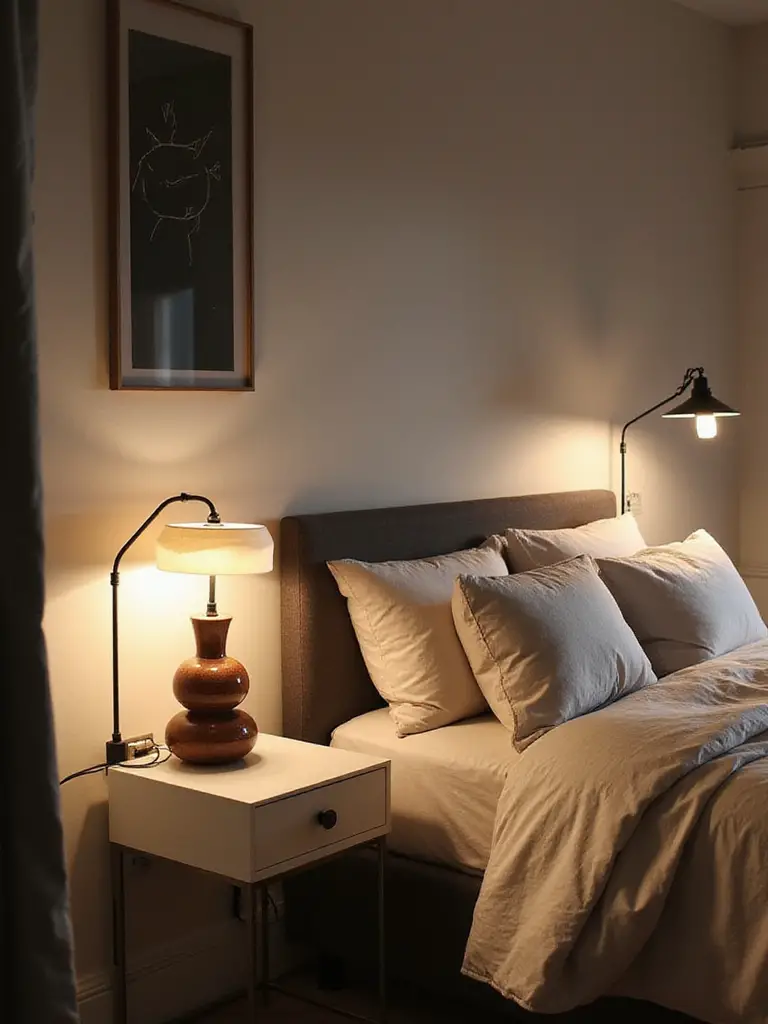
But don’t let style trump function. Make sure the bottom of the lampshade is roughly at your eye level when you’re sitting up in bed to read. This directs the light onto your book, not into your eyes. I’m a huge fan of wall-mounted sconces, especially in smaller rooms. They free up your entire nightstand surface for plants, books, and water, which is a huge functional win.
The secret to making all this lighting work is one simple device.
16. Integrate Dimmers Everywhere. Seriously.
If I could make one piece of technology mandatory in every bedroom, it would be a dimmer switch. It is the single most important tool for supporting your circadian rhythm. Our bodies are not meant to go from bright, full-blast light straight to darkness. We need a dusk period. Dimming your lights in the hour before bed is a powerful biological signal to your brain that it’s time to start producing melatonin and prepare for sleep.
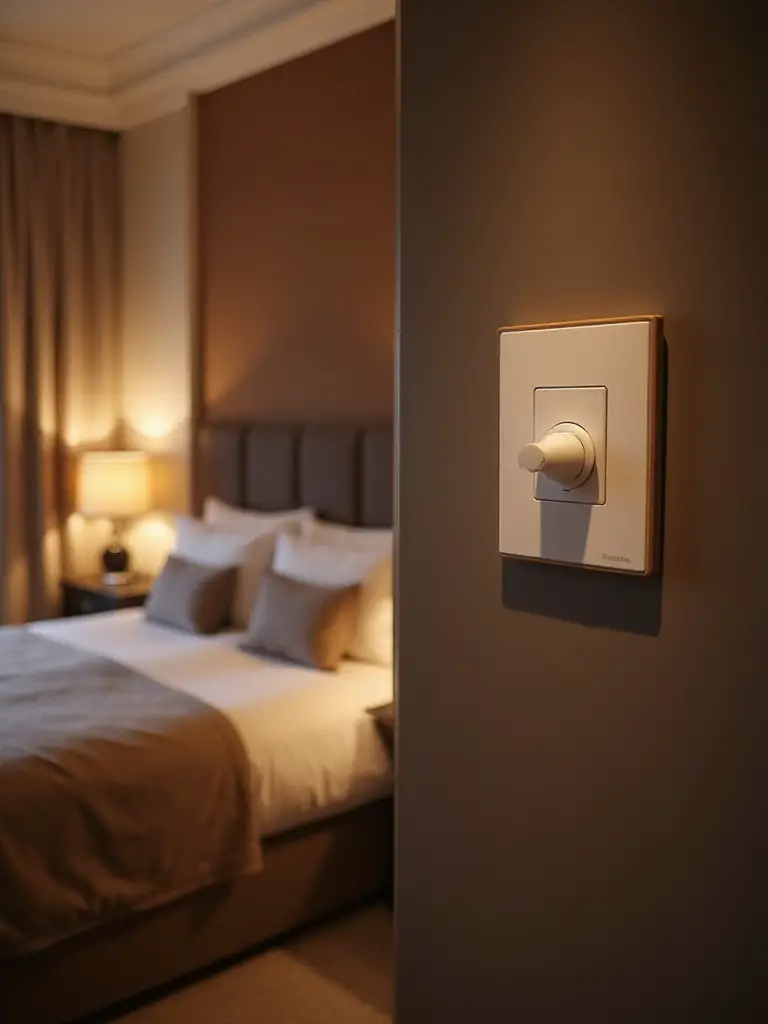
Put dimmers on everything: your overhead light, your bedside lamps (you can get simple plug-in dimmers for these). Better yet, invest in smart bulbs. Being able to say “Hey Google, dim the bedroom to 20 percent” from the comfort of your bed is a modern luxury that has a real, tangible benefit for your sleep hygiene. It’s a small investment with a massive payoff in well-being.
Finally, let’s talk about the best light of all—the free kind.
17. Optimize Natural Light, the Ultimate Nutrient
Natural light is life. It boosts our mood, helps regulate our sleep cycles, and makes any space feel more vibrant and alive. The goal is to get as much of it as possible and help it bounce around the room. The number one trick? A large mirror. Placing a big mirror directly opposite a window will essentially double the amount of light in that spot and reflect it deep into the room.
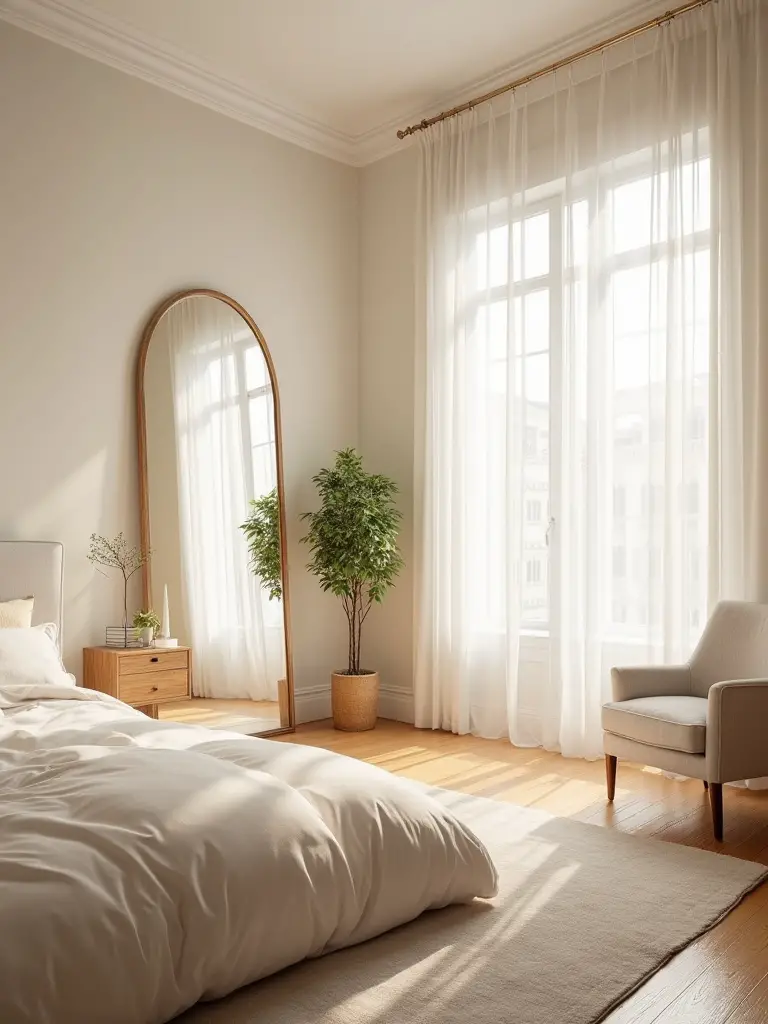
Keeping your walls a light, soft color will also do wonders for bouncing light around. You don’t have to go with sterile white; a soft cream, a pale blush, or a light sky blue works beautifully. And please, clean your windows! It’s amazing how much light a layer of city grime can block. Treating natural light as a precious resource and designing your room to celebrate it will change how your space feels more than any piece of furniture.
Personal Touches & Refined Details
This is the soul of your space. This is where you move from a “well-designed room” to your room. These are the elements that tell your story and make your sanctuary a true reflection of you.
18. Display Meaningful Wall Art That Tells Your Story
Please, I beg you, don’t buy generic “art” from a big-box store just to fill a wall. Your walls are valuable real estate for telling your story. What art genuinely moves you? Maybe it’s a large-scale photograph of a landscape you love. Maybe it’s a collection of vintage botanical prints. Maybe it’s a beautiful textile you picked up on your travels. The art in your bedroom should make your heart sing a little every time you look at it.
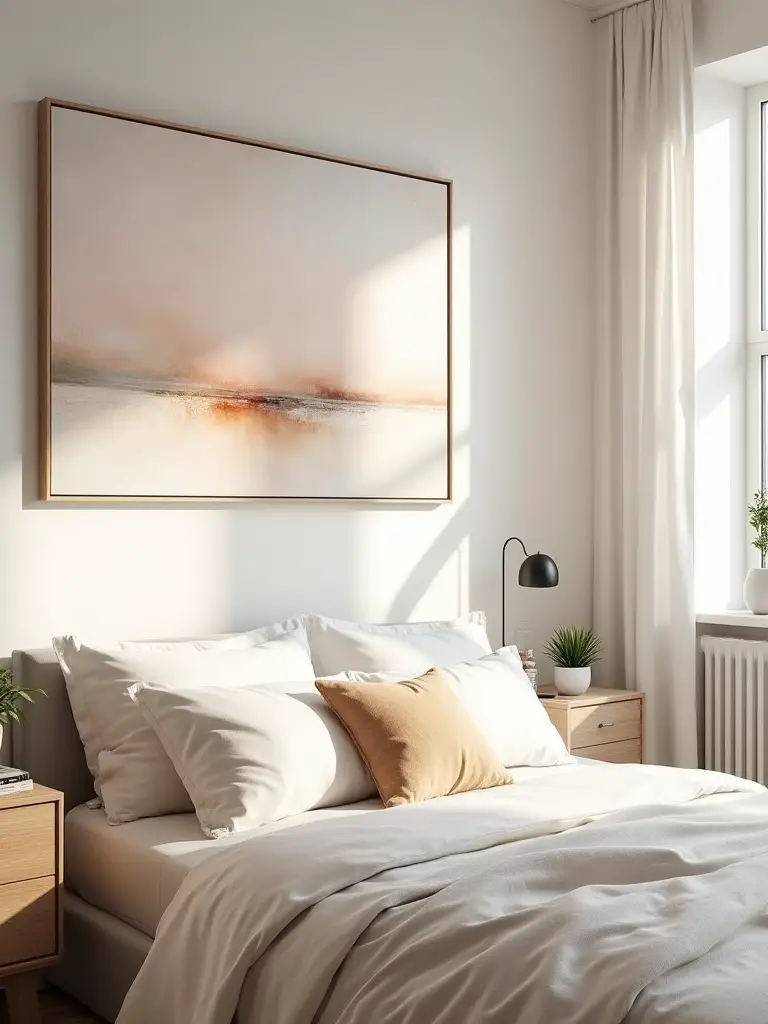
A shortcut to a personal, curated look is creating a gallery wall. But don’t just hang a bunch of random pictures. Pick a theme. It could be family photos all printed in black and white for a cohesive look. It could be a collection of small abstract paintings that share a color palette. Or it could be frames filled with pressed flowers from your own garden. It should be a visual diary of what you love.
One of the best things to display? Living art.
19. Incorporate Indoor Plants for Life and Freshness
This is where your bedroom truly becomes a living ecosystem. Plants are not just decor; they are roommates that actively improve your environment. They purify your air by absorbing toxins, they release oxygen, and studies have shown that just being around them can lower stress levels. The act of caring for another living thing—watering it, watching it grow—is profoundly grounding.
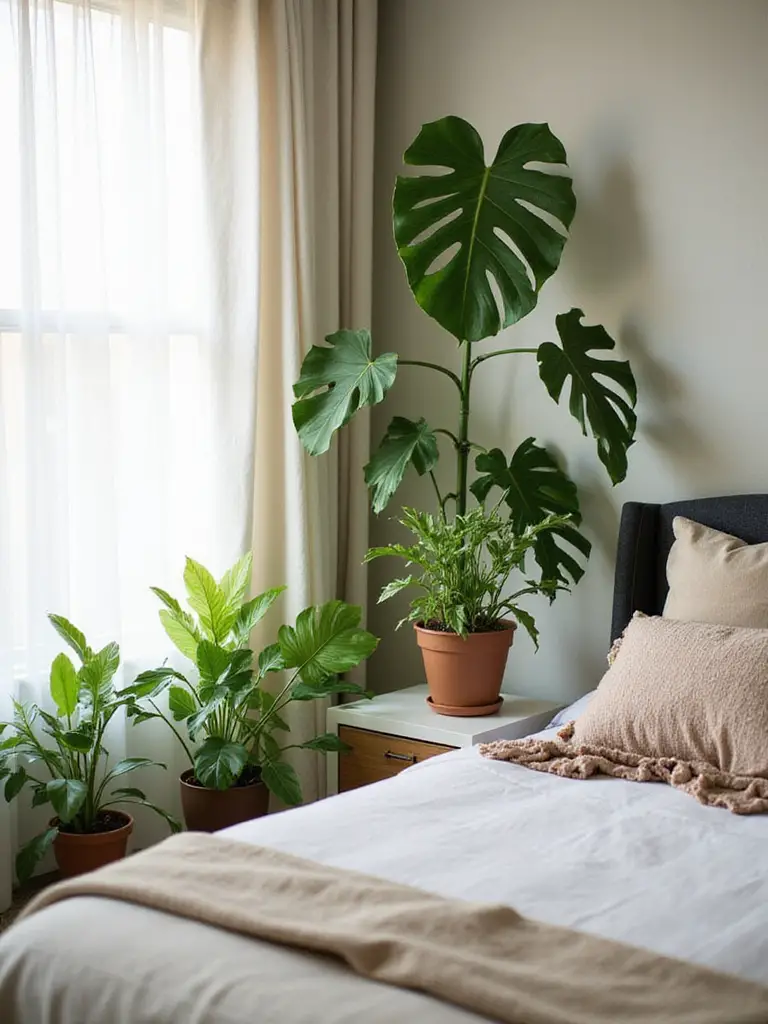
Don’t think you have a green thumb? Start with the unkillable ones. Snake plants and ZZ plants are famous for thriving on neglect and low light, and they are air-purifying powerhouses. Pothos is another great one that can trail beautifully from a high shelf or a hanging basket. A big, statement Fiddle Leaf Fig can transform a corner, but even a few small succulents on a windowsill can bring that essential element of life into your room. They are the lungs of your personal sanctuary.
Beyond plants, other personal treasures deserve a spotlight.
20. Showcase Cherished Personal Items and Collections Thoughtfully
Your history and your passions deserve a place of honor. That collection of sea glass you’ve been gathering for years? The beautiful stones you picked up on a hike? Your grandmother’s antique teacups? Don’t hide them in a box. Curate them. Create a little “cabinet of curiosities” on a set of floating shelves or on top of a dresser. It’s these intensely personal objects that give a room its soul.
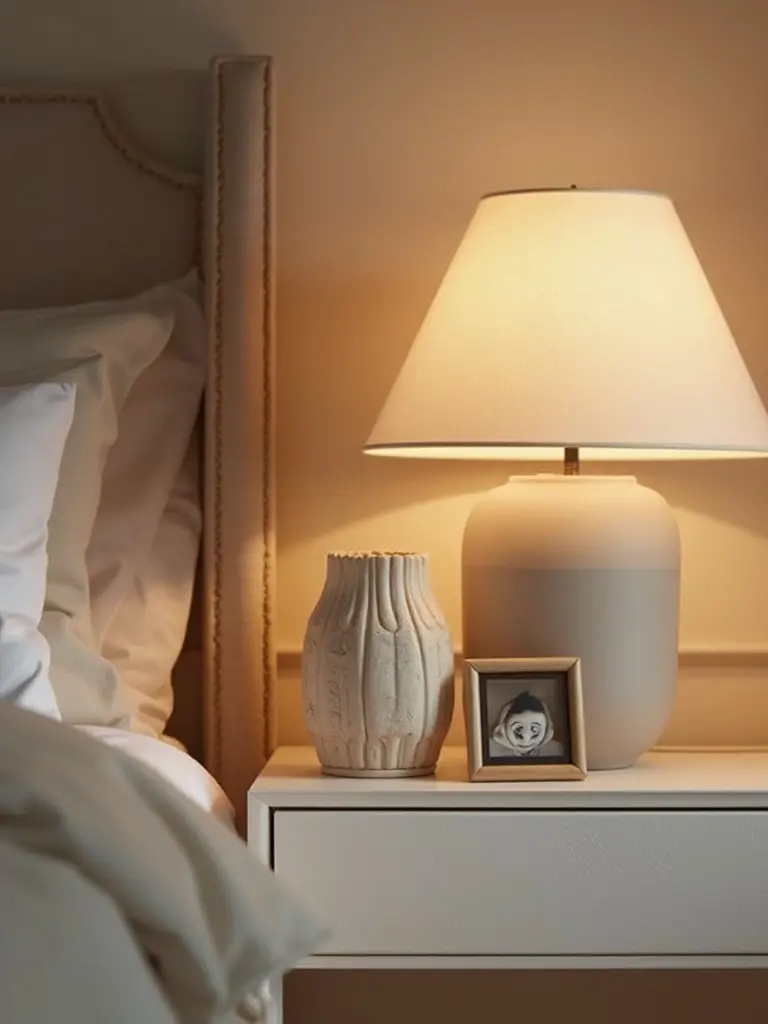
The trick is to group them with intention. Arrange items in clusters of three or five, varying the heights and textures. A beautiful tray can be a great way to corral a collection of smaller items and make them feel like a cohesive display rather than clutter. This isn’t about showing off; it’s about surrounding yourself with things that hold positive energy and happy memories. It’s a powerful way to anchor yourself in your own story.
And to make sure all this beauty can shine, you need one final, crucial element.
21. Utilize Smart Storage to Banish Clutter
Clutter is the enemy of serenity. It’s visual noise that creates a low-grade hum of stress in our minds. A serene retreat is, by definition, an organized one. This doesn’t mean you need to become a hardcore minimalist, but it does mean everything you own needs a home. Smart storage is the key to creating a calm, expansive-feeling space, especially in a small room.
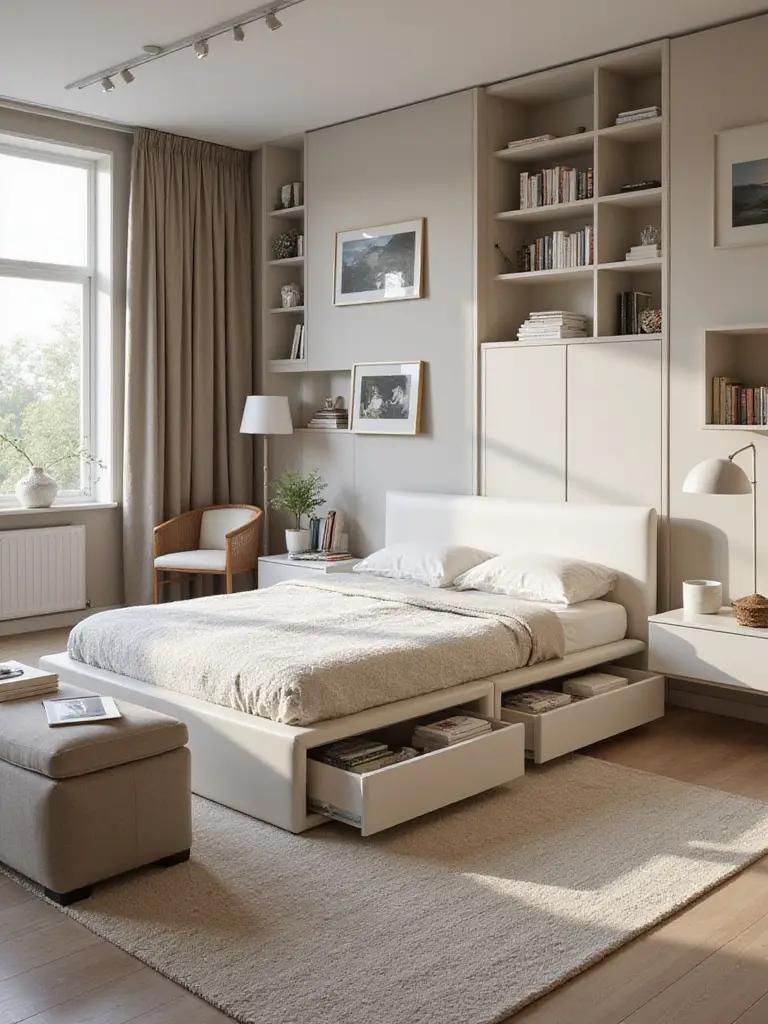
Look for multi-functional furniture. An ottoman at the end of the bed that opens up for storing extra blankets. A bed frame with deep drawers underneath for out-of-season clothes. Use vertical space: install shelves that go high up the wall. And the best trick for a streamlined look is to have storage blend in. A wardrobe or set of cabinets painted the same color as the walls will visually disappear, making the room feel much larger and more peaceful. Creating a clutter-free environment is an act of self-care.
Conclusion
See? Transforming your bedroom into a sanctuary isn’t about following a rigid set of rules or buying a bunch of trendy junk. It’s a process of cultivation. It’s about seeing your room as a living ecosystem that you have a relationship with. It’s a space that should nurture you, support your health, and reflect the story of who you are.
The goal isn’t just a beautiful room; it’s a functional habitat that promotes deep rest and greets you with peace every morning. Don’t feel like you have to do all 21 things at once. Just pick one. Maybe you start by clearing the clutter off your nightstand and putting a small plant there instead. Maybe you invest in a dimmer switch. Start small, and you’ll feel the ripple effect. Listen to your space. Nurture it, and I promise, it will nurture you right back.
